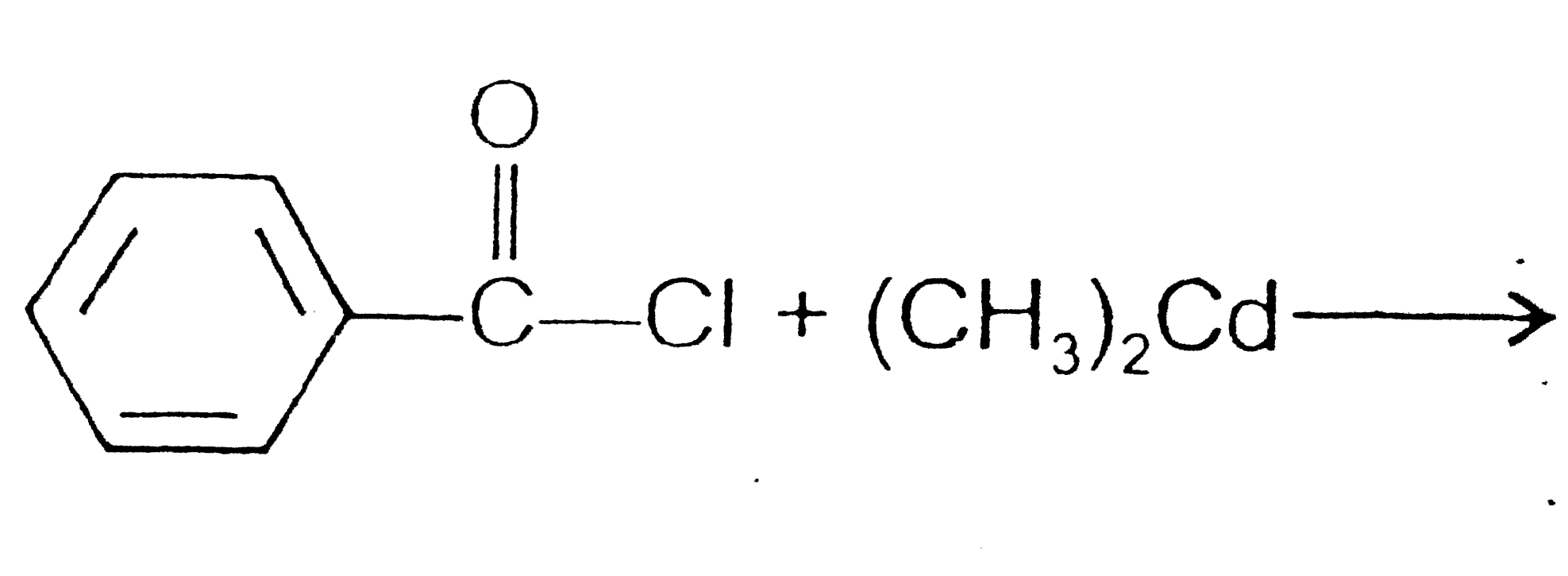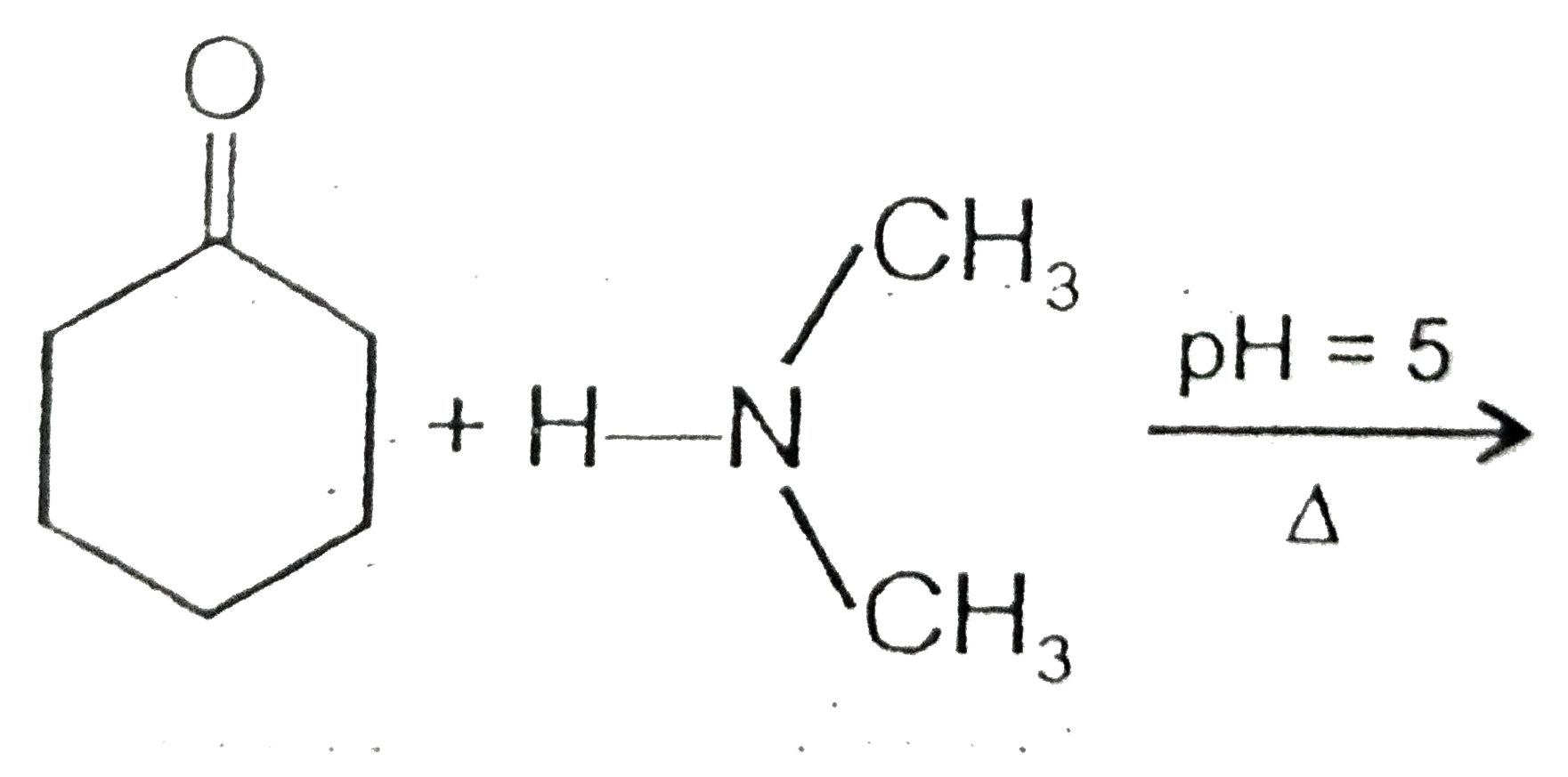Give the products of the following reactions.
CH3C≡CΘ:+CH3CH=OH2O−−→X
To solve the reaction of CH₃C≡C:+CH₃CH=O in the presence of water, we will follow these steps:
Step 1: Identify the Reactants
The reactants are:
- CH₃C≡C: (which is propyne, an alkyne)
- CH₃CH=O (which is acetaldehyde, an aldehyde)
Step 2: Understand the Reaction Mechanism
In this reaction, the alkyne (propyne) acts as a nucleophile due to the presence of the triple bond. The carbon atom with the negative charge (the terminal carbon of the alkyne) will attack the carbonyl carbon of the aldehyde.
Step 3: Nucleophilic Attack
The nucleophilic carbon from propyne attacks the carbonyl carbon of acetaldehyde, resulting in the formation of a tetrahedral intermediate. This intermediate has a negatively charged oxygen atom.
Step 4: Protonation
The negatively charged oxygen will then take a proton (H⁺) from water, leading to the formation of an alcohol.
Step 5: Final Product Structure
The product formed will have:
- A total of 5 carbon atoms (from propyne and acetaldehyde)
- An alcohol group (-OH) on the second carbon
- A triple bond between the third and fourth carbon atoms
Thus, the product can be named as 3-pentyne-2-ol.
Final Answer
The product of the reaction is 3-pentyne-2-ol.
---
The reactants are:
- CH₃C≡C: (which is propyne, an alkyne)
- CH₃CH=O (which is acetaldehyde, an aldehyde)
In this reaction, the alkyne (propyne) acts as a nucleophile due to the presence of the triple bond. The carbon atom with the negative charge (the terminal carbon of the alkyne) will attack the carbonyl carbon of the aldehyde.
The nucleophilic carbon from propyne attacks the carbonyl carbon of acetaldehyde, resulting in the formation of a tetrahedral intermediate. This intermediate has a negatively charged oxygen atom.
The negatively charged oxygen will then take a proton (H⁺) from water, leading to the formation of an alcohol.
The product formed will have:
- A total of 5 carbon atoms (from propyne and acetaldehyde)
- An alcohol group (-OH) on the second carbon
- A triple bond between the third and fourth carbon atoms
The product of the reaction is 3-pentyne-2-ol.
Topper's Solved these Questions
- HYDROCARBON BOOK - MOTIONCHAPTER - HYDROCARBON EXERCISE - QUESTIONS
6 Videos
- HYDROCARBON BOOK - MOTIONCHAPTER - HYDROCARBON EXERCISE - Exercise - 1
85 Videos
- GRIGNARD REAGENTBOOK - MOTIONCHAPTER - GRIGNARD REAGENTEXERCISE - EXERCISE-2
16 Videos
- IONIC EQUILIBRUIMBOOK - MOTIONCHAPTER - IONIC EQUILIBRUIMEXERCISE - Exercise -4 (Level -II)
14 Videos
Similar Questions
Knowledge Check
The end product of the following reaction
CH3MgBr+CH2=CH−CHOH3O+−−−→ is :ACH2=CH−OH∣C∣CH3−HBC∣OHH2CH=CHCH3CCH3CH2CH2CHODNone of these is correct.The product of the following reaction are
CH3C=C.CH2CH3=(i)O3−−−−−−−−→(ii)Hydrolysis?ACH3COOH+CH3COCH3BCH3COOH+CH3CH2COOHCCH3CHO+CH3CH2CHODCH3COOH+CO2
Give the products of the following reactions
CH3C≡CCH2CH2C≡CCH2CH3KMnO4−−−−→ΔW
View SolutionGive the products of the following reactions
(CH3)2CHC≡CCH2CH2CH3KMnO4−−−−→ΔX
View SolutionGive the product of the following reactions.
H3C−H2C−C≡C−CH2CH2CH3KMnO4−−−−→NeutralX
H3C−H2C−C≡C−CH2CH2CH3KMnO4−−−−−−−−−−→acidic higher tempY
View SolutionGive the products of the following reactions
CH3CH2C≡CCH2CH3KMnO4−−−−→ΔY
View SolutionPredict the products of the following reactions
(a)
(b) CH3−O∣∣C−CH3(i)CH3MgBr−−−−−−−−→(ii)H3O+
(c )
View SolutionWhite the produc t of following reactions.
(a)CH3−H3C∣C=CH3∣C−CH3O3−−−−−→Zn/H2O (b) CH3−C≡C−CH3O3−−−−−→Zn/H2O
(c) CH3−C≡C−CH3O3/H2O2−−−−−→ (d) CH3−CH3∣C=CH−CH3O3/H2O2−−−−−→
View Solution

